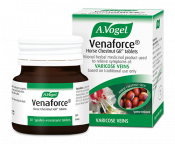An introduction to the causes of varicose veins
To help understand why varicose veins can appear, it is useful to understand what veins are and what their normal function is.
Veins, like arteries and capillaries, are blood vessels and part of the circulatory system.
Arteries supply organs with blood and nutrients, and possess thick walls to handle the pressure within them as blood is pumped with force out of the heart with each heartbeat. Veins have the job of returning blood back to the heart and lungs once it has delivered their ‘goods’ around the body. They operate under much lower pressure and have thinner walls. Capillaries connect arteries to veins.
Of all the veins in our body, the veins in our legs have the hardest job. This is because we spend more than half of our life sitting and standing, and blood in our legs has to flow against the force of gravity. For this reason, although varicose veins may be found in any part of our body, the legs are the most susceptible to the problem. This page will focus on varicose veins in the legs.
Three types of veins can be found in our legs:
- Superficial leg veins lie just below the surface of the skin and carry about 10% of the blood returning from the legs. These veins can be visible through the skin even if they are normal. Superficial veins are the ones that develop into varicose veins
- Deep leg veins lie inside the leg and are surrounded by muscles and connective tissue. They carry the rest of the blood returning from the leg to the heart
- Perforator veins (small communicating veins) connect superficial leg veins to the deep leg veins.
To prevent blood lying in a pool at your ankles, small valves are found every 8 to 10 cm inside superficial and deep leg veins. These help drive the flow of blood in one direction – towards the heart.
What causes varicose veins?
Varicose veins develop when veins lose their elasticity, stretch or become enlarged. This causes valves to leak, allowing blood to flow backwards towards the feet. The vein swells with extra blood and over time, this causes further damage to the valves making the situation worse.
Extra blood and fluid in the swollen vein starts to seep into the surrounding tissue and this gives rise to symptoms of varicose veins, such as the sensation of tiredness or heaviness in the legs, and swollen ankles. If the condition is long-standing, tissue cells become damaged, giving rise to complications.
Who develops varicose veins?
It is estimated that in the Western World, around 3 in 10 people will develop varicose veins in their lifetime. The condition occurs in both sexes but appears to be more common in women, probably because of the effect of the female hormones.
Although varicose veins may occur at any age, they are more commonly found as one gets older. This is probably because tissues become less firm with age, allowing veins to stretch more easily. The tendency to develop varicose veins appears to run in families.
You are more likely to develop varicose veins if you are:
- On your feet all day – particularly if you are standing a lot rather than walking around
- Have a sedentary lifestyle – exercise helps to pump blood up from the legs.
- Pregnant - there are a number of reasons for this. The change in hormones during pregnancy causes all tissues in the body to relax and this also happens in veins. In addition, as the baby increases in size, extra pressure is exerted on the veins in the pelvic region, partially obstructing the flow of blood from the legs. Varicose veins are more likely to appear during the second half of pregnancy. Additionally, the more babies you have had, the higher your chances of developing varicose veins. Each pregnancy increases the likelihood of damage to the veins
- Overweight – being overweight is associated with varicose veins, particularly in women, although the exact reason for this is not yet fully understood
- Long-standing constipation – constipation has a similar effect on the pelvic region as pregnancy - blood flow from the legs is partially obstructed. As well as the increased tendency for varicose veins to develop, you will have a higher chance of developing haemorrhoids
- A full bladder – some people are not able to empty their bladders completely. One likely cause of this in men over the age of 50 is an enlarged prostate.
- Other causes – in rare cases, varicose veins may develop as a result of a tumour in the pelvis, or clots in the deep veins of the legs, called deep vein thrombosis.
Although many factors are known to contribute to the development of varicose veins, they can also appear without any clear reason or trigger.








